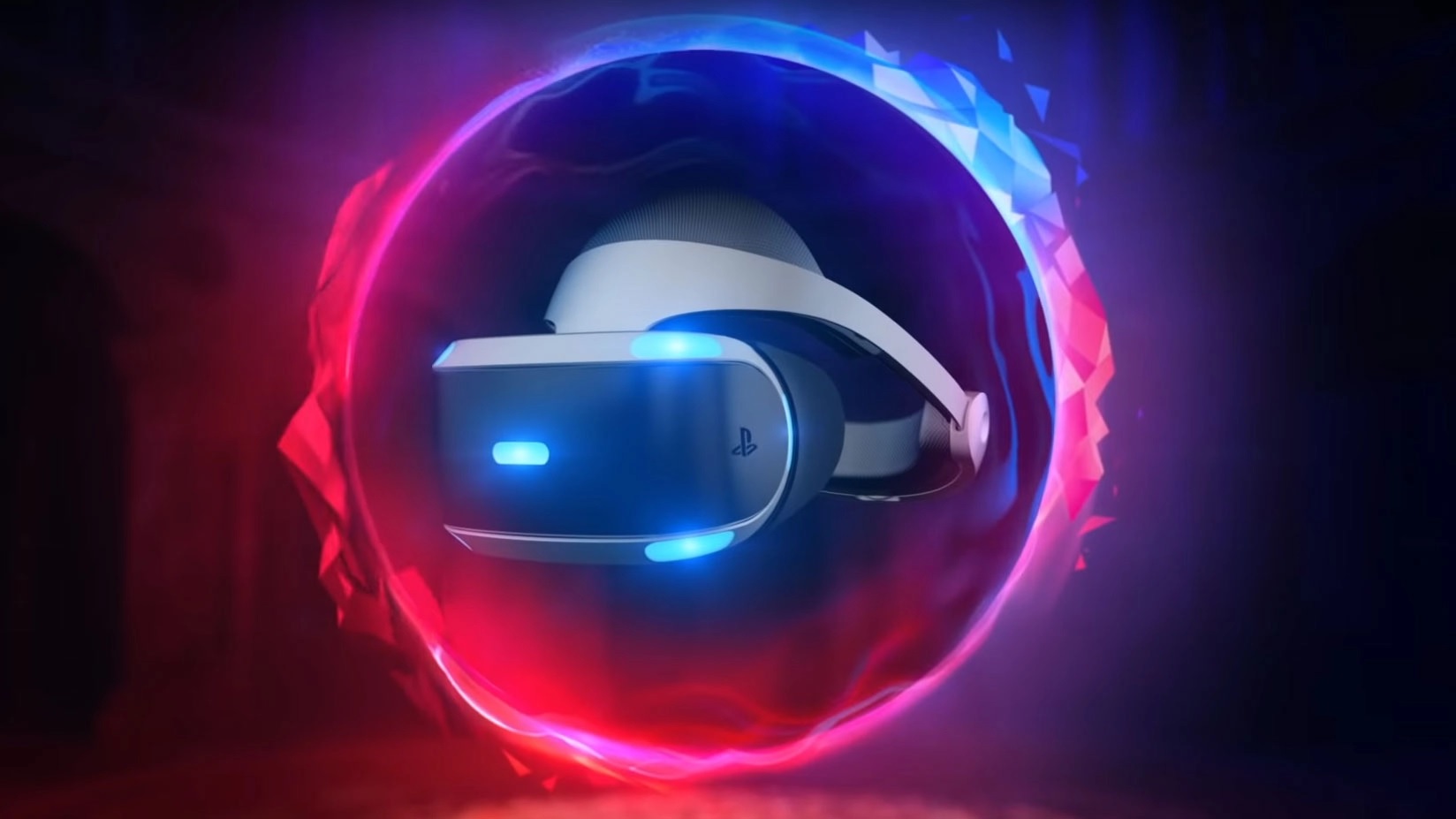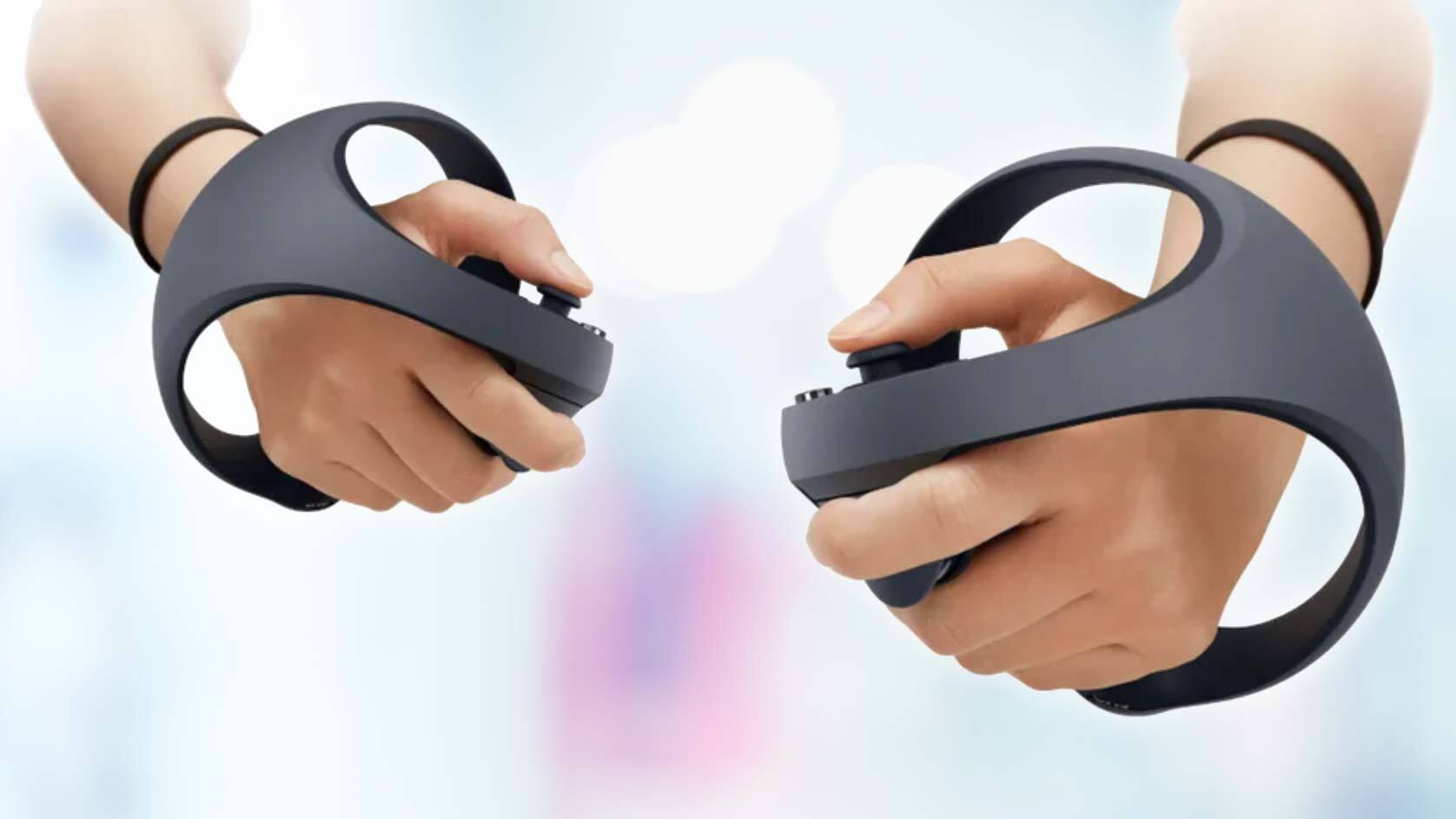PSVR 2 vs PSVR — the biggest differences we know so far
How does the PlayStation VR 2 compare to its predecessor?

During CES 2022, Sony finally announced the long-rumored PlayStation VR2. Beyond simply saying the device exists, Sony was gracious enough to provide concrete specs on its upcoming virtual reality headset. The company didn’t reveal what the final unit will look like nor did it divulge a potential release window. Still, the specs are enough to make Tom’s Guide Staff Writer Rory Mellon want to buy a PSVR 2 on day one.
There’s good reason for current PSVR users and VR enthusiasts to be excited for PSVR 2. It features 2000 x 2040 resolution OLED screens per eye, built-in cameras, a single cable setup, new controllers and even has a AAA exclusive to call its own: Horizon Call of the Mountain. While it may not be as powerful as devices like the HTC Vive Pro 2, the PSVR 2 seems to be, at least on paper, a vast improvement over its predecessor.
But how do the PSVR and PSVR 2 stack up in a direct comparison? This might be an unfair question given how we can't yet put the PSVR 2 through real-world tests against the PSVR. But the PSVR 2’s released specs are official so direct comparisons are fair game. Plus, who doesn’t enjoy a good head-to-head match? Let’s see what each VR peripheral provides.
PSVR vs PSVR 2: Specs
| Specification | PSVR | PSVR 2 |
|---|---|---|
| Display | OLED | OLED |
| Resolution (per eye) | 960x1080 | 2000x2040 |
| Refresh Rate | 90Hz, 120Hz | 90Hz, 120Hz |
| Field of View (approx) | 100 degrees | 110 degrees |
| Cameras | None | Four in-built headset cameras |
| Feedback | None | Single in-built motor |
| Connection | USB-A, HDMI | USB-A, HDMI USB-C |
| Audio | Built-in microphone and stereo headphone jack | Built-in microphone and stereo headphone jack |
PSVR vs PSVR 2: Display
Both VR headsets have OLED displays. However, where the original PSVR sported a resolution of 960 x 1080, PSVR 2 has a resolution of 2000 x 2040. That’s no small jump, to say the least. One of the chief complaints folks had with PSVR was its low resolution and almost non-existent anti-aliasing in certain titles. The higher resolution will bring out additional graphical details. The power of the PS5 no doubt facilitates the headset’s higher resolution.
The PSVR 2’s 110-degree field of view is a step up from the PSVR’s 100-degree FOV. In truth, there weren’t many complaints about the PSVR’s field of view. But the extra 10 degrees afforded by PSVR 2 will help you become more immersed in whatever title you’re playing.
Both headsets have 90 to 120Hz refresh rates. Though it would have been nice if PSVR 2 featured 144 or 165Hz refresh rates, 90 and 120Hz will suffice. For those wondering why the headsets have their respective frame rates, it’s because VR needs higher frame rates to lessen the chances of users getting motion sickness. Again, it would have been better to see higher refresh rates on the new headset but we can’t complain too much.
PSVR vs PSVR 2: Cameras, feedback and connection
The PSVR 2 has four built-in headset cameras and a single built-in motor. The PSVR has neither of these. Both peripherals have USB-A and HDMI ports, but PSVR also has a USB-C port. Connection-wise, both headsets have built-in microphones and stereo headphone jacks.
The additional cameras and built-in motor should make a significant difference. The PSVR 2 has headset-based controller tracking through an embedded integrated camera. It is also capable of eye-tracking. These are major improvements over the original PSVR’s single-camera light-based tracking system. Headset/controller-based tracking should be more accurate since it no longer requires the use of a camera mounted on your TV.
The single built-in motor will add vibration to the PSVR 2 headset. It’s easy to imagine the device whirring or shaking if, for example, an in-game enemy hits your head. We’re not sure if every user will enjoy headset vibration, but the addition could be a selling point for some. The PS5’s 3D Audio tech and the new PSVR 2 Sense controllers’ haptic feedback will be complemented by headset vibration to be sure.
PSVR vs PSVR 2: Controllers

We’re glad that Sony is ditching the old PS Move controllers used for PSVR in favor of the new PSVR 2 Sense controllers.
We’ve covered the PSVR 2 controllers before, but to summarize, the new controllers allow for more natural grip and a significantly higher degree of free movement compared to the PS Move controllers. The shape and size should accommodate a range of hand sizes. Like the PlayStation 5 Dual Sense controllers, these controllers feature adaptive triggers and haptic feedback.
The PSVR 2 Sense controllers offer finger touch detection. This enables them to detect where your fingers are placed without any button inputs. The controllers will use a tracking ring located across the bottom. As we said above, this is a major upgrade since the controller and headset will more accurately track your movements. The controllers also feature analog sticks, which is a blessing all on its own since it could all but eliminate the annoying point and click movement employed by many PSVR games.
PSVR vs PSVR 2: Cables
We have good news and bad news, and both are the same: PSVR 2 will have a single cable.
Even the most devout PSVR user will tell you that using the headset can be a precarious proposition due to the two cables connected to the PlayStation 4. Making sudden movements or having a pet or young child wander into the path of said cables could be a recipe for an expensive disaster. Having only one cable should make PSVR 2 safer to use.
But of course, the fact the VR headset still requires a wired connection is disappointing. Criticize the Oculus Quest 2 all you want, but its wireless connectivity is no doubt one of the reasons it has become so popular. It’s somewhat baffling that PSVR 2 doesn’t feature a wireless connection. For some, this aspect alone could be a deal-breaker – especially if they’re used to the Quest 2. As Tom’s Guide News Editor Imad Khan said, the PSVR 2 not being a standalone headset is a problem.
PSVR vs PSVR 2: Outlook
The Playstation VR2 has many of the features and upgrades we expected. The higher-resolution display, enhanced tracking features and new controllers are a huge step up from the current PSVR. Spec-wise, the PSVR 2 demolishes the PSVR. The only downside we see is the wired connection. However, considering it has fewer wires than its predecessor, this is at least a step in the right direction.
Again, it may not be fair to compare a yet-to-be-released peripheral to its current iteration. But based on what we know, there’s plenty to be excited about with PSVR 2. If the system is priced right and has full-backward compatibility with last-gen PSVR games, it should be a winner for fans of virtual reality gaming.
Sign up to get the BEST of Tom's Guide direct to your inbox.
Get instant access to breaking news, the hottest reviews, great deals and helpful tips.

Tony is a computing writer at Tom’s Guide covering laptops, tablets, Windows, and iOS. During his off-hours, Tony enjoys reading comic books, playing video games, reading speculative fiction novels, and spending too much time on X/Twitter. His non-nerdy pursuits involve attending Hard Rock/Heavy Metal concerts and going to NYC bars with friends and colleagues. His work has appeared in publications such as Laptop Mag, PC Mag, and various independent gaming sites.
